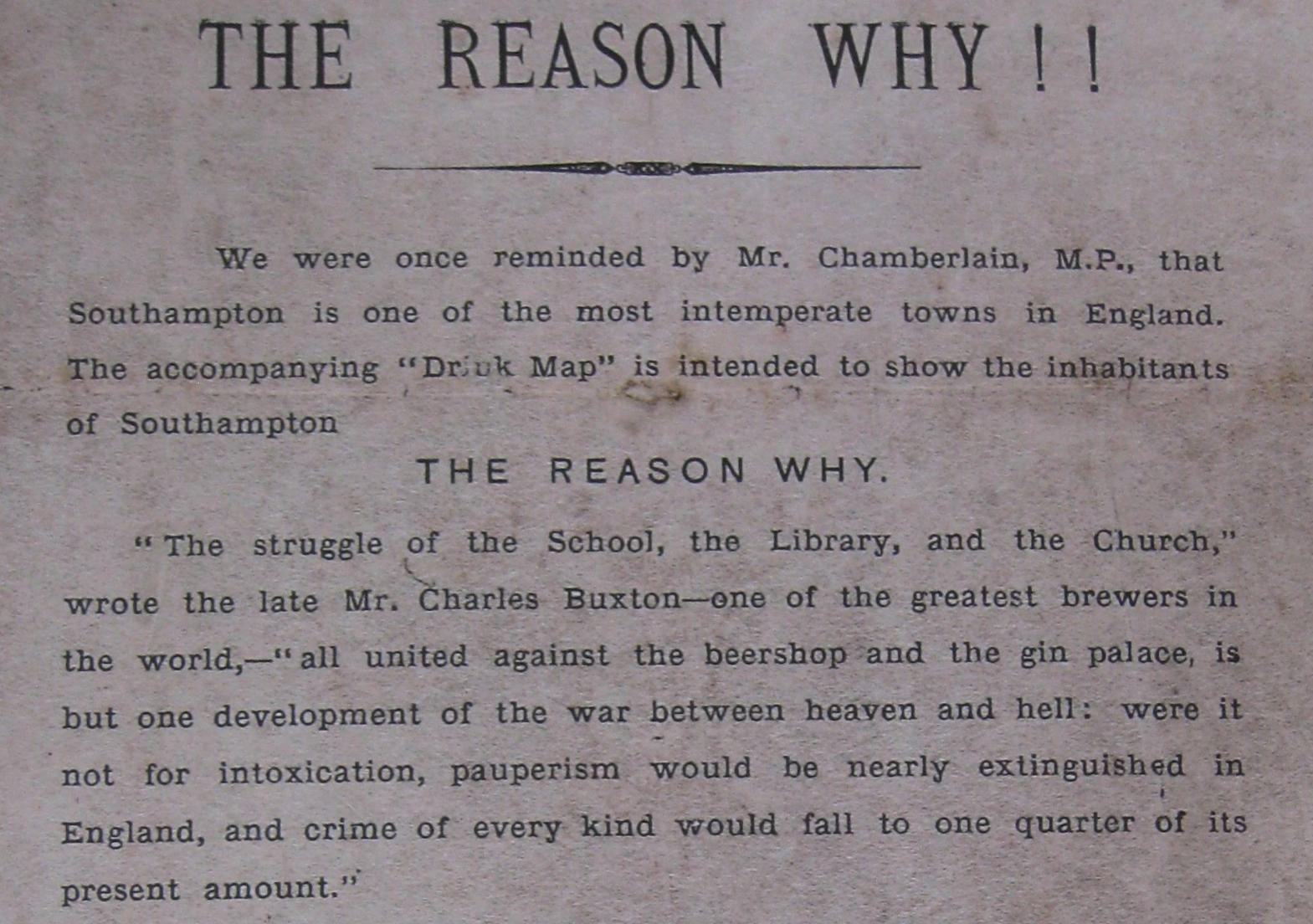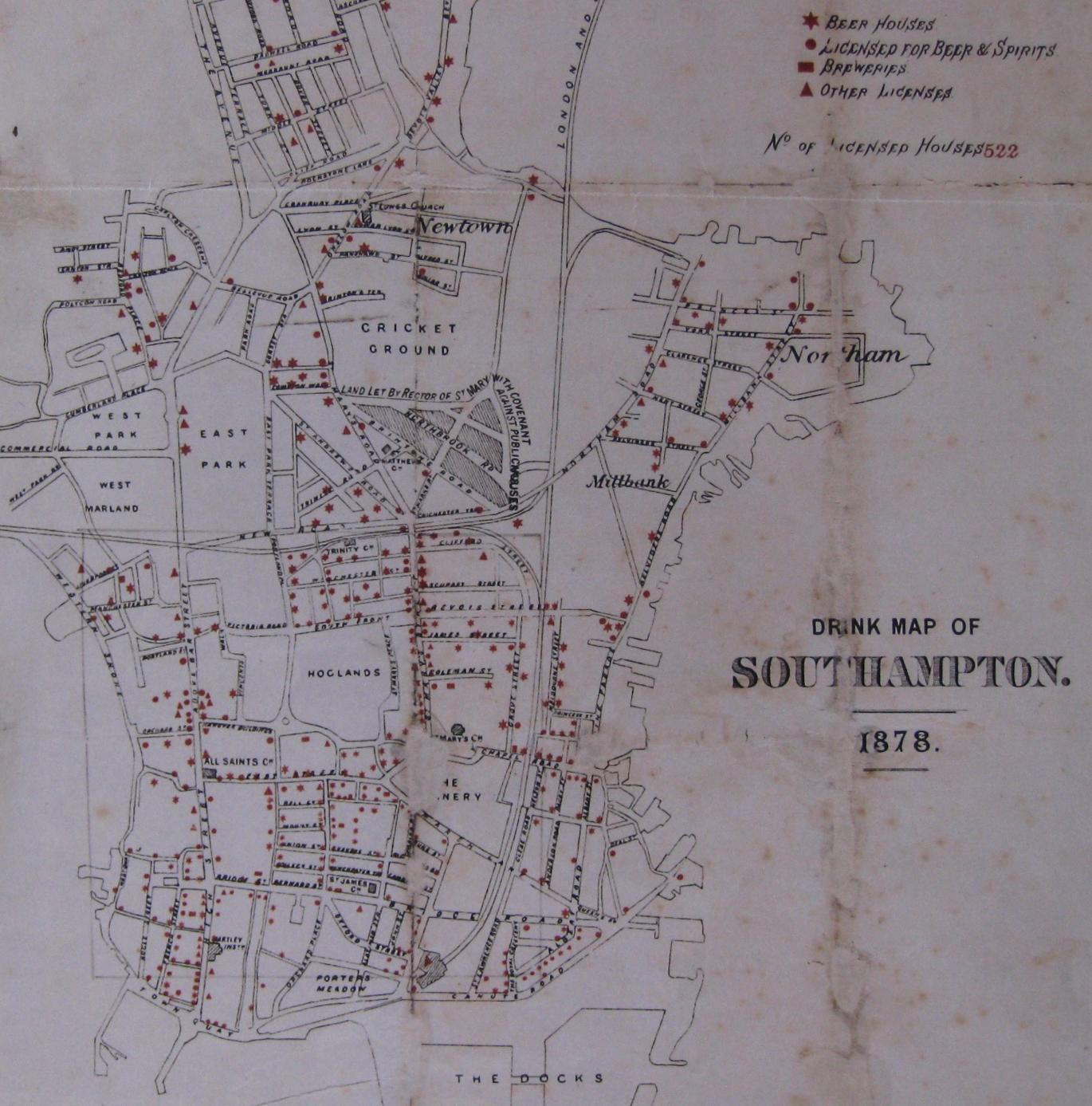
Many people today bemoan the fact that many of Southampton's pubs have closed and converted into convenience stores or apartments. 140 years ago the opposite was the case and it was claimed that there were too many pubs and outlets selling alcohol in Southampton and that many should close.

In 1878 the St Mary's Church of England Temperance Society whose president was Basil Wilberforce the Rector of St Mary's, a man who abstained from drinking alcohol, published a drink map of Southampton showing the number of alcohol outlets in the town including fully licensed premises, beer houses, breweries and other retail outlets. Its purpose was to illustrate why Joseph Chamberlain MP could claim that Southampton was one of the most intemperate towns in England.
Chamberlain was advocating a system whereby a retail license for the sale of spirits would be awarded to a trust, with the aim of controlling consumption and for profits to be used for libraries, museums and parks. Chamberlain claimed that Southampton was the third most drink ridden town in England with a pub for every 110 inhabitants and 1 person in every 120 having been charged with drunkenness.
The growth of modern Southampton began around 1840 with the arrival of the railway and the opening of the eastern docks, both of which brought great wealth and many visitors to the town. This meant that there were three types of customers for alcohol whose needs had to be met. Firstly people coming for a voyage needed accommodation and refreshment and this was met by the inns and hotels. Secondly, the ships' crews who had been at sea a long time were looking for an evening of "cheap beer, bad women and entertainment" and then to stagger back to their ship. Finally, many people working in the docks and living in the town wanted somewhere where they could enjoy a few pints.

The red marks on the map show the extent to which each of these needs was met and it is said that the map proved very popular with the ships' crew when they were in town. For the residents of some of the poorer areas such as the streets around St Michael's the beer was far more palatable and a lot less dangerous to drink than the local water which proved to be the source of two outbreaks of cholera in the 19th century.
By the beginning of the 20th century, the local water supply had been made safe and the licensing magistrates were very strict with the awarding of licences following the 1902 Licensing Act such that the number of licensed premises declined and convictions for drunkenness fell to 1 in 250 by 1908.
The local Licensing Authority worked with the breweries to reduce the number of pubs by introducing a compensation scheme and taking a hard line with license renewals for notorious public houses. In 1912 the Bulls Head owned by Eldridge Pope and located in the Medieval Merchants House in French Street was refused a license and received over £1500 in compensation.